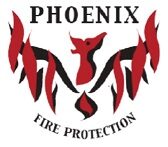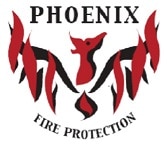FAQs
For comprehensive advice contact our office. Information provided below is to be used as a guide only.
Annual Fire Safety Statement
Also commonly known as an AFSS. An Annual Fire Safety Statement is a certificate that attests that each essential fire safety measure installed within any building has been assessed by a properly qualified person and was found to be capable of performing to the standard required by the most recent Fire Safety Schedule.
The owner of each building (or the owner’s agent on behalf of the owner) is required to provide the certificate to the Council and the Fire Brigade each 12 months and to display the current certificate prominently at the premises.
This requirement was introduced in 1988 into the then Ordinance 70. Now it is contained in the Environmental Planning and Assessment Regulation 2000 (Part 9 Division 5).
Essential Fire Safety Measures are installations or types of construction that are incorporated into a building to ensure the safety of the occupants within the building in the event of fire or other emergency. These measures include but not limited to :
- Automatic Fire Suppression Systems (eg: Sprinkler Systems)
- Fire Hose Reels
- Fire Hydrants
- Fire Doors
- Fire Extinguishers
- Smoke Exhaust Systems
- Exit Signs
- Emergency Lighting
Clause 177 of the Environmental Planning and Assessment Regulation2000 states that it is an offence to fail to provide the statement. Escalating cumulative weekly penalty notices apply for this offence:
- 1 week late $500
- 2 weeks late an additional $1000
- 3 weeks late an additional $1500
- 4 weeks late an additional $2000
Fire Doors
Deadbolts are not permitted as hardware in fire doors because they may impede the proper function of the door to be self latching. Deadbolts can be removed and replaced with certain approved hardware self latching hardware.
There are strict clearance limits on fire doors and if these gaps exceed the limits then the door is not compliant. In most cases, however, the use of approved fire seals can bring doors up to the required standard.
Only if the door is in disrepair has faulty hardware, or do not have the required compliance tag on the door. The only option is to have the doors replaced and have new hardware installed. Door replacement is not required if the operating function is compliant and contains compliant hardware.
Emergency and Exit Lighting
Emergency and Exit Lighting is tested every six months in accordance with Australian Standards 2293
Technicians will simulate a power failure to the lighting systems but the use a lighting circuit breaker or installed emergency light test switch. The discharge test will run for a minimum of 90 minutes.
On most occasions a licensed electrician will be required to the replace the failed Emergency and Exit Lighting.
Some newer brands have a plug and play style module which contains the battery backup and drivers. These can be replaced by any handyman as they are not exposed to live electrical components.
Portable Fire Extinguishers
Dry chemical fire extinguishers are the most common type of fire extinguisher used in Australia. The dry chemical fire extinguisher is also known as ABE, BE or DCP fire extinguishers. The following information is crucial for people who are seeking more knowledge about fire extinguishers, how they work and how they can used safely.
- Class A: Wood, Paper & Plastic.
- Class B: Flammable & Combustible Liquids.
- Class C: Flammable Gasses.
- Class E: Energised Electrical Equipment.
- Class F: Cooking Oils and Fats.

